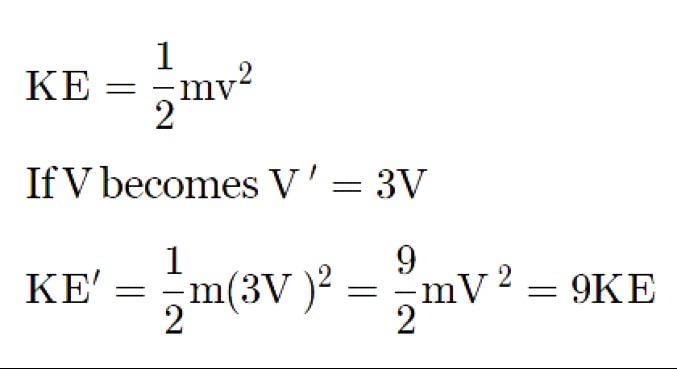Assertion & Reason Test: Work, Energy & Power - NEET MCQ
10 Questions MCQ Test Topic-wise MCQ Tests for NEET - Assertion & Reason Test: Work, Energy & Power
Directions : Each of these questions contain two statements, Assertion and Reason. Each of these questions also has four alternative choices, only one of which is the correct answer. You have to select one of the codes (a), (b), (c) and (d) given below.
Assertion : A work done by friction is always negative.
Reason : If frictional force acts on a body its K.E. may decrease.
Directions : Each of these questions contain two statements, Assertion and Reason. Each of these questions also has four alternative choices, only one of which is the correct answer. You have to select one of the codes (a), (b), (c) and (d) given below.
Assertion : A force applied on the body always does work on the body.
Reason : If a force applied on a body displaces the body along the direction of force work done will be maximum.
Directions : Each of these questions contain two statements, Assertion and Reason. Each of these questions also has four alternative choices, only one of which is the correct answer. You have to select one of the codes (a), (b), (c) and (d) given below.
Assertion : The work done in moving a body over a closed loop is zero for every force in nature.
Reason : Work done depends on nature of force.
Directions : Each of these questions contain two statements, Assertion and Reason. Each of these questions also has four alternative choices, only one of which is the correct answer. You have to select one of the codes (a), (b), (c) and (d) given below.
Assertion : The change in kinetic energy of a particle is equal to the work done on it by the net force.
Reason : Change in kinetic energy of particle is equal to work done only in case of a system of one particle.
Directions : Each of these questions contain two statements, Assertion and Reason. Each of these questions also has four alternative choices, only one of which is the correct answer. You have to select one of the codes (a), (b), (c) and (d) given below.
Assertion: Kinetic energy of a body is quadrupled, when its velocity is doubled.
Reason : Kinetic energy is proportional to square of velocity. If velocity is doubled the K.E. will be quadrupled
Directions : Each of these questions contain two statements, Assertion and Reason. Each of these questions also has four alternative choices, only one of which is the correct answer. You have to select one of the codes (a), (b), (c) and (d) given below.
Assertion: If the velocity of a body is tripled, then K.E. becomes 9 times.
Reason : Kinetic energy , K.E.=mv2/2
Directions : Each of these questions contain two statements, Assertion and Reason. Each of these questions also has four alternative choices, only one of which is the correct answer. You have to select one of the codes (a), (b), (c) and (d) given below.
Assertion: Kinetic energy of a system can be increased or decreased without applying any external force on the system.
Reason: This is because K.E. =mV2/2, so it independent of any external forces.
Directions : Each of these questions contain two statements, Assertion and Reason. Each of these questions also has four alternative choices, only one of which is the correct answer. You have to select one of the codes (a), (b), (c) and (d) given below.
Assertion : The rate of change of total momentum of a many particle system is proportional to the sum of the internal forces of the system.
Reason : Internal forces can change the kinetic energy but not the momentum of the system.
Directions : Each of these questions contain two statements, Assertion and Reason. Each of these questions also has four alternative choices, only one of which is the correct answer. You have to select one of the codes (a), (b), (c) and (d) given below.
Assertion : A man rowing a boat upstream is at rest with respect to the bank. He is doing no external work.
Reason : Work done by constant force, W = F s cosθ.
Directions : Each of these questions contain two statements, Assertion and Reason. Each of these questions also has four alternative choices, only one of which is the correct answer. You have to select one of the codes (a), (b), (c) and (d) given below.
Assertion : A spring has potential energy, both when it is compressed or stretched.
Reason : In compressing or stretching, work is done on the spring against the restoring force.
|
9 docs|1259 tests
|





















